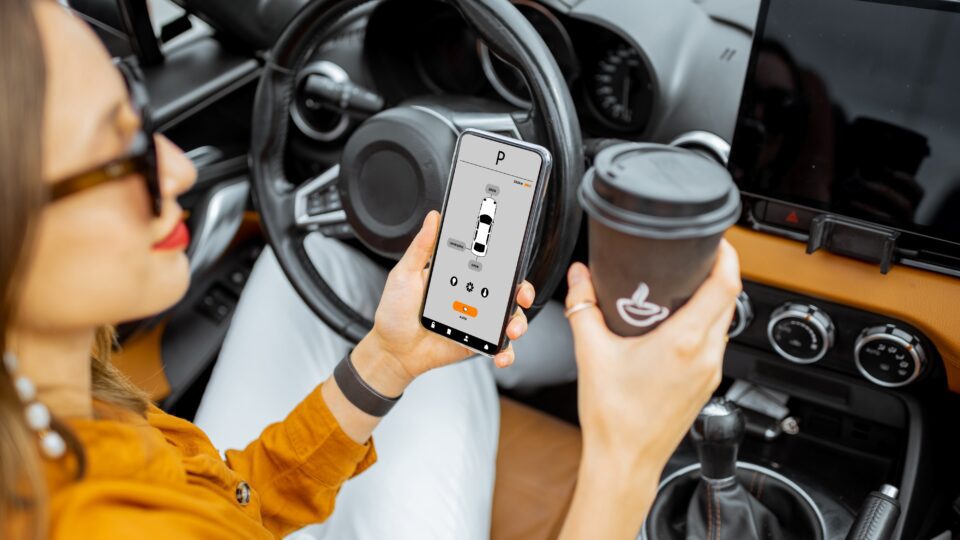
The Road Ahead: How Self-Driving Features Impact Car Insurance
Self-driving technology is no longer a futuristic concept, even here in Nova Scotia—it’s already on the road. From adaptive cruise control to lane-keeping assistance, many new vehicles now come equipped with advanced driver assistance systems (ADAS) that take over certain driving functions. While we may still be a few years away from seeing fully autonomous cars as the norm, these features are reshaping the driving experience—and they’re starting to impact how car insurance works.
What Are Self-Driving Cars?
These vehicles, known as autonomous or automated, are equipped with advanced technologies that allow them to navigate and operate with minimal human input. They use a combination of artificial intelligence, sensors, cameras, radar, and GPS to perceive their surroundings, make decisions, and drive safely.
While the ultimate goal is full autonomy, Intact Insurance identified five levels of vehicle automation that define current capabilities:
- Level 0: No automation. The driver is fully responsible for all controls.
- Level 1: Driver assistance. The car can manage specific functions, like cruise control or automatic braking.
- Level 2: Partial automation. The vehicle can control steering and acceleration/deceleration, but still requires constant driver supervision.
- Level 3: Conditional automation. The car can handle most driving tasks, but may request the driver to intervene.
- Level 4: High automation. The vehicle can operate autonomously in most conditions, though some rare scenarios still require human input.
- Level 5: Full automation. The car manages every aspect of driving, from city streets to highways, without any human involvement.
Most vehicles on the road today are between Levels 1 and 3. As technology advances, the driving role will shift more and more from the person behind the wheel to the vehicle’s computer system.
The Shift from Driver to Technology
Traditionally, car insurance has been based on the idea that accidents result from human error. In fact, studies suggest that driver mistakes cause more than 90% of collisions. As vehicles take on more driving responsibilities, the balance of liability is shifting.
For example, if your adaptive braking system fails to engage in time and causes a collision, is the driver responsible—or the manufacturer? This grey area is leading to new discussions in the insurance industry about liability, fault, and how claims are handled when technology is involved.
Do Self-Driving Features Lower Insurance Costs?
At first glance, features like blind-spot detection, lane departure warnings, and collision avoidance systems seem like a recipe for lower premiums. After all, they reduce the risk of accidents. And in many cases, insurers do offer discounts for vehicles with advanced safety technologies.
However, there’s a flip side: the cost of repairing or replacing these high-tech components can be significantly higher than fixing traditional vehicle parts. A bumper with built-in sensors or cameras can cost thousands to repair after even a minor fender bender. So while accidents may become less frequent, the cost per claim could increase.
The Question of Liability
The insurance industry is keeping a close eye on the growing role of automation. In cases involving self-driving technology, liability could increasingly fall on car manufacturers or software developers rather than individual drivers. Some experts even predict a future where personal auto insurance shifts toward product liability insurance, covering potential technology malfunctions rather than driver error.
For now, most insurers treat vehicles with self-driving features much like traditional cars. Drivers remain responsible for staying attentive and in control. But as automation advances, insurance models will continue to evolve.
What This Means for Drivers
Are you shopping for a new car with advanced driver-assist features? If so, it’s worth speaking with your insurance broker, or one of our Bauld Insurance advisors, about how those features may affect your premium. Some questions to ask include:
- Are discounts available for vehicles with safety technologies?
- How much would repairs cost if a sensor, camera, or automated system is damaged?
- How is fault determined in an accident involving driver-assist features?
Understanding these details can help you make informed choices about your vehicle and coverage. Stay updated on the changing car insurance landscape on our blog page for all things auto-related!
Self-driving technology is paving the way for a safer driving future, but it’s also bringing new questions to the world of insurance. For now, human drivers remain at the wheel—both literally and legally. As technology advances, drivers, manufacturers, and insurers will need to adapt together.